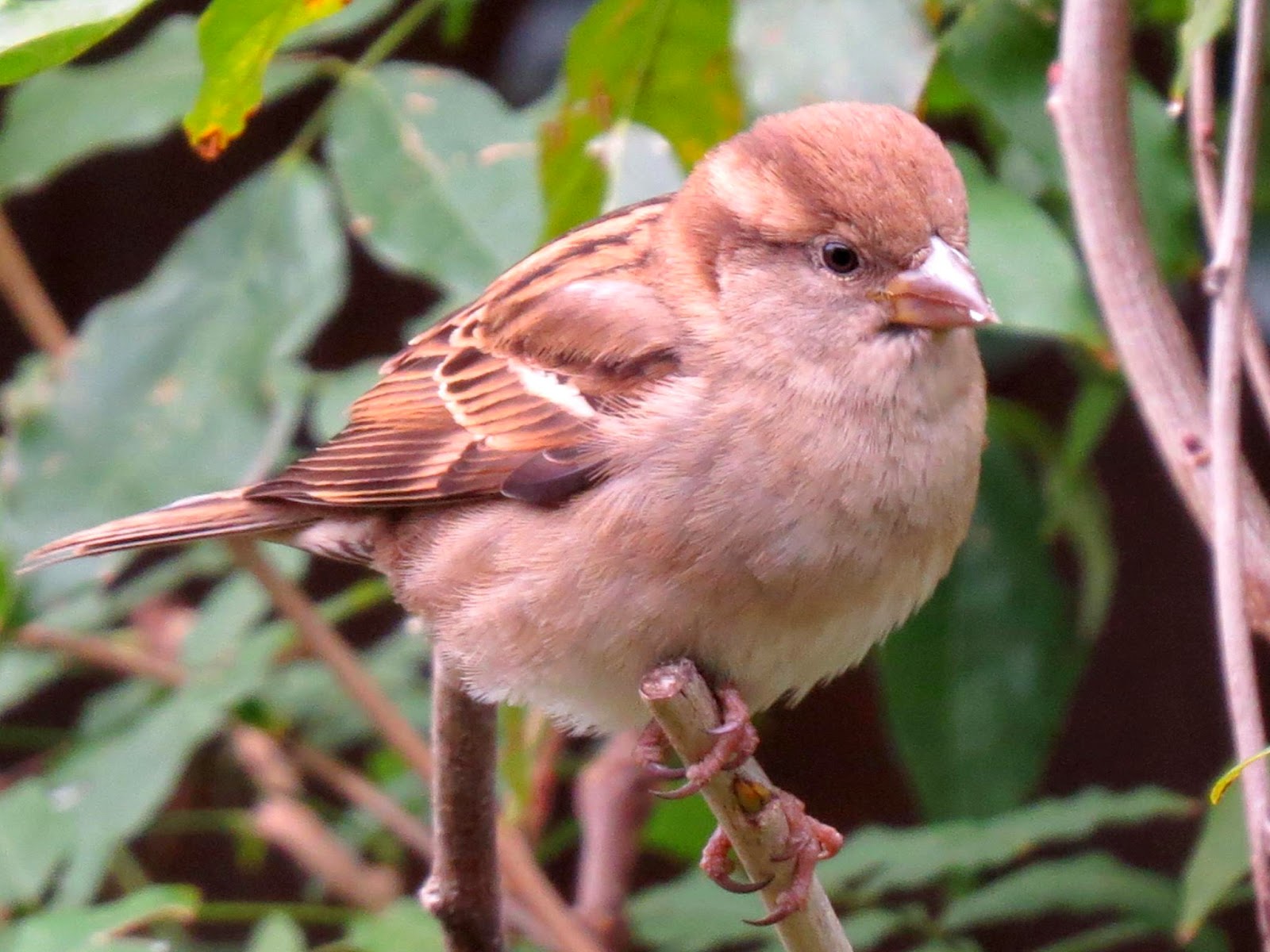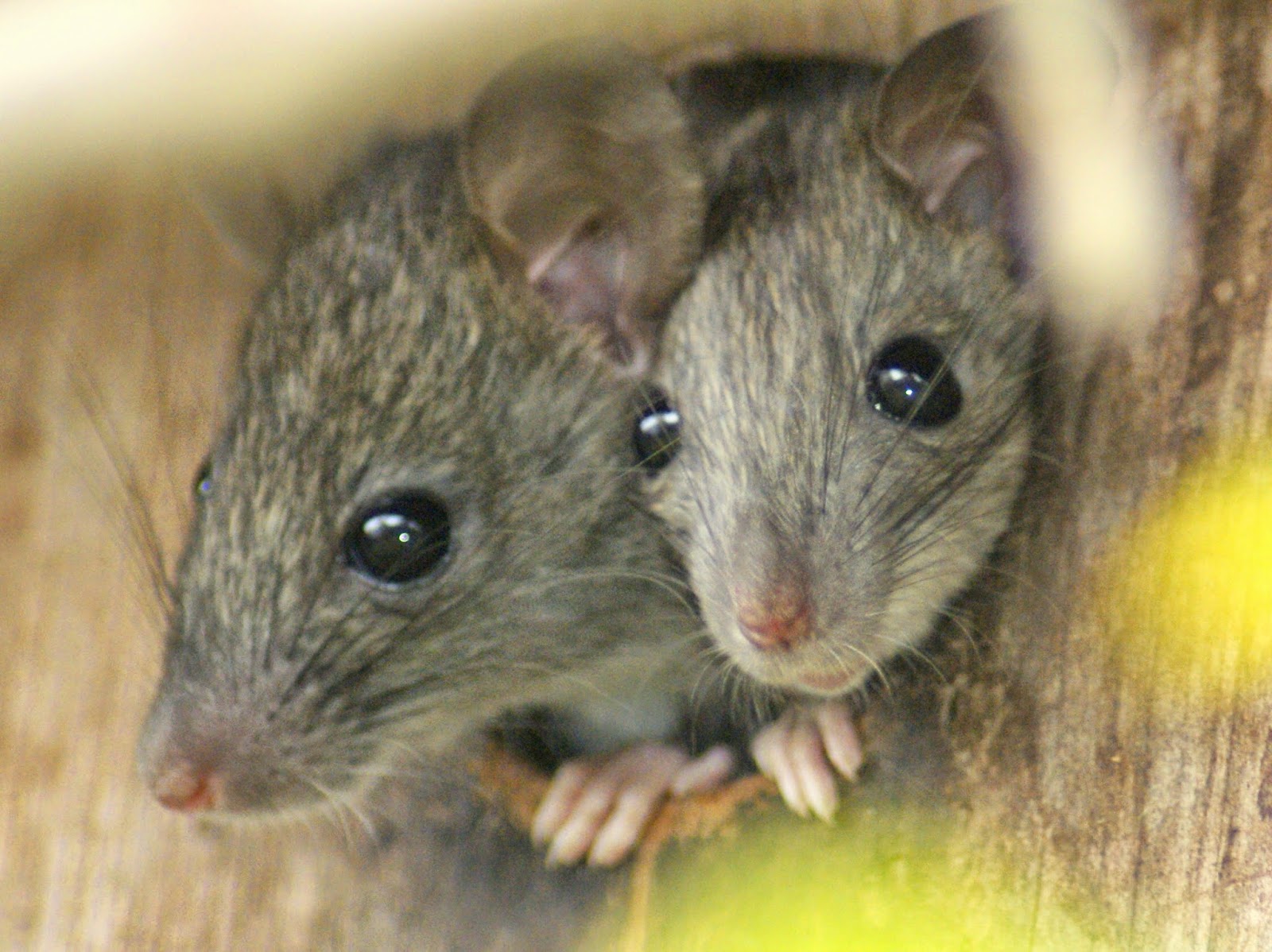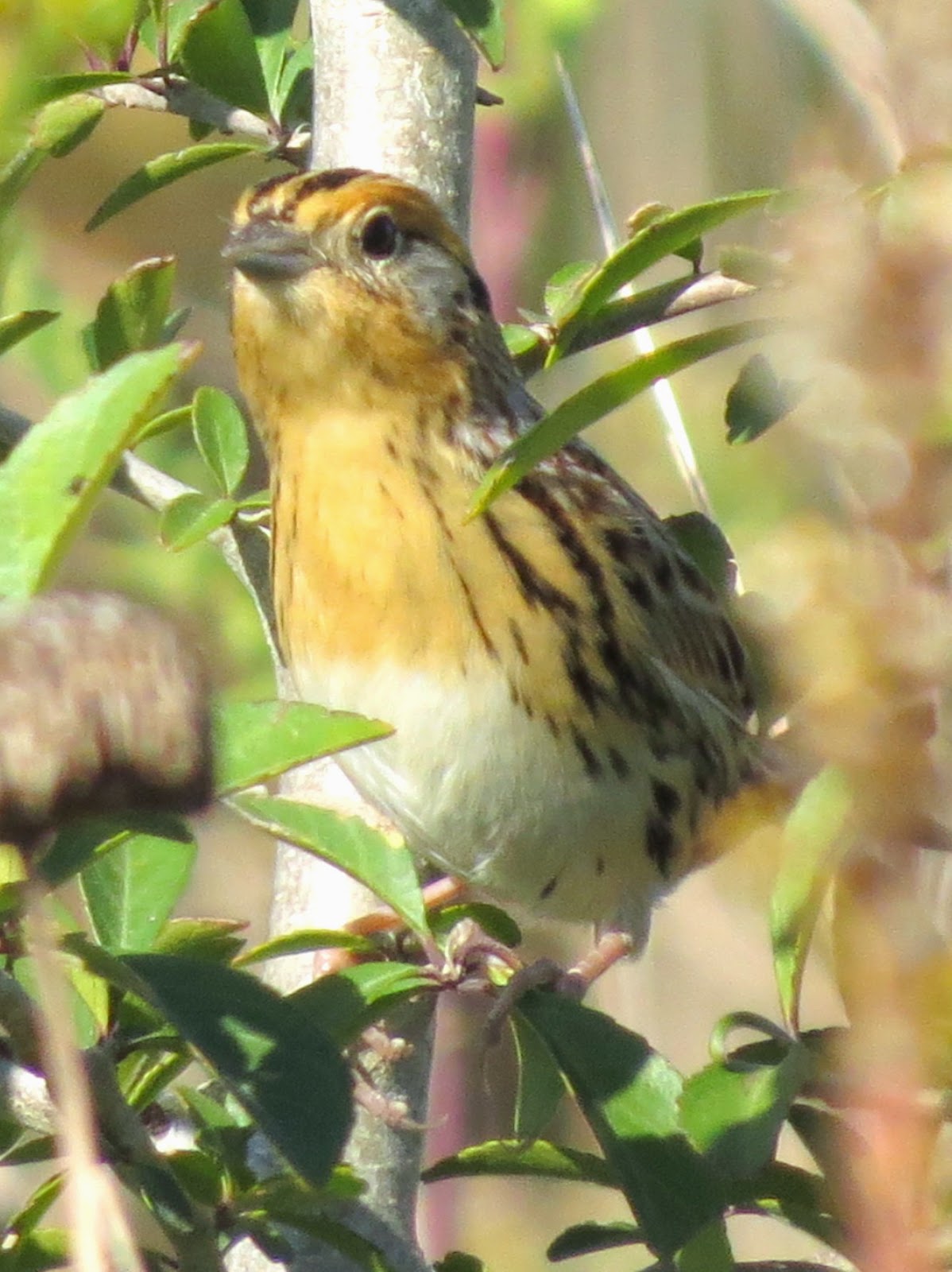.
I took the photos below at Baytown on Sunday. As you can see, they aren't very good to say the least. So why did I bother keeping rather than deleting them?
The reason is simple. The photos show a Common Ground Dove, a bird that is fairly rare in Harris County. As soon as I spotted this bird, I grabbed these photos, taken with my Canon SX50's lens set to its maximum length. They aren't very clear but they are clear enough to show some of the bird's distinctive features - its rosy breast, the red base of its bill, and the scaly plumage on its upper chest and head.
After this, I waited around for 15 minutes in hopes that the bird would move closer and enable me to get a good photo. However, instead of moving to a better position, the bird gradually moved further and further back into the foliage.
So these photos may not be good but they are the only ones I managed to get - and at least they prove that the bird I saw really was a Common Ground Dove.
.
Jeff Mohamed blogs about birds and other wildlife in the Houston area - and occasionally farther afield.
Saturday, November 29, 2014
Wednesday, November 26, 2014
Back to Baytown
.
Sunday morning I drove down to the Baytown Nature Center. I have visited the site a lot this year, mainly because it's a good site for watching and photographing wading birds and shorebirds.
I didn't time this visit well, though, because the tide was high and very few of my target birds were present in the wetlands areas. In fact, the only birds I saw in the wetlands were a couple of Snowy Egrets and American Avocets (below).
Luckily, there were a few more birds in and around the site's various ponds and channels.
The only bird actually in the water was a Neotropic Cormorant.
The banks of the ponds and channels were more productive, having several each of Great Blue Heron, Killdeer and Spotted Sandpipers.
I was watching a male Downey Woodpecker climb to the top of a snag when an Eastern Phoebe decided to flycatch from a neighboring tree.
I think of Loggerhead Shrikes as solitary birds but all the ones I saw on Sunday seemed to be hanging out in pairs.
Surprisingly, all of the normally gregarious White-winged Doves that I saw were on their own.
As always at Baytown, Ospreys appeared at several points alog the trails.
A flock of 18 American White Pelicans circled overhead, too far above for me to get a photo. So I settled for taking a picture of one of the innumerable Brown Pelicans that I saw.
Towards the end of my walk I did see a much more interesting bird. But I'll leave that until my next post.
.
Sunday morning I drove down to the Baytown Nature Center. I have visited the site a lot this year, mainly because it's a good site for watching and photographing wading birds and shorebirds.
I didn't time this visit well, though, because the tide was high and very few of my target birds were present in the wetlands areas. In fact, the only birds I saw in the wetlands were a couple of Snowy Egrets and American Avocets (below).
Luckily, there were a few more birds in and around the site's various ponds and channels.
The only bird actually in the water was a Neotropic Cormorant.
The banks of the ponds and channels were more productive, having several each of Great Blue Heron, Killdeer and Spotted Sandpipers.
I was watching a male Downey Woodpecker climb to the top of a snag when an Eastern Phoebe decided to flycatch from a neighboring tree.
I think of Loggerhead Shrikes as solitary birds but all the ones I saw on Sunday seemed to be hanging out in pairs.
Surprisingly, all of the normally gregarious White-winged Doves that I saw were on their own.
As always at Baytown, Ospreys appeared at several points alog the trails.
A flock of 18 American White Pelicans circled overhead, too far above for me to get a photo. So I settled for taking a picture of one of the innumerable Brown Pelicans that I saw.
Towards the end of my walk I did see a much more interesting bird. But I'll leave that until my next post.
.
Monday, November 24, 2014
So Where Are the Birds?
.
By now our yards should be busy with our normal residents plus a variety of winter residents: Ruby-crowned Kinglet, Orange-crowned Warbler, Yellow-rumped Warbler, Brown-headed Nuthatch, Rufous Hummingbird etc. But they aren't.
I have heard the occasional Ruby-crowned Kinglet but the only winter resident to have moved in so far is an Orange-crowned Warbler.
Okay, perhaps there haven't been enough cold fronts to push a lot of birds down here from the northern states and Canada, and maybe more birds will arrive soon. However, that doesn't explain where our year-round residents have gone. I should point out that their disappearance isn't recent. We haven't see a Blue Jay in two months and have only had a couple of brief visits by Red-bellied Woodpeckers, Northern Mockingbirds and Northern Cardinals in that time. Even the Carolina Wrens (below) and Carolina Chickadees that normally visit several times a day only seem to appear at widely-spaced intervals.
Luckily, our Downy Woodpeckers are still with us.
And for better or worse so are a few White-winged Doves. I thought doves were essentially seed eaters but our White-wingeds seem to have developed a taste for peanuts also.
Definitely for worse, the only birds that are visiting our yards in any numbers are House Sparrows. We somehow managed to avoid attracting them to our yards for years but now a large flock has discovered our feeders. The other day I counted 37 birds in our backyard.
P.S.
There is a birdhouse on the wall of our garden shed, right opposite our main living-room window. The other day I was excited to catch a glimpse of movement in it. Had the house finally attracted the attention of Carolina Wrens or perhaps Brown-headed Nuthatches? We should be so lucky! Other people get birds in their birdhouses but we get rats.
.
By now our yards should be busy with our normal residents plus a variety of winter residents: Ruby-crowned Kinglet, Orange-crowned Warbler, Yellow-rumped Warbler, Brown-headed Nuthatch, Rufous Hummingbird etc. But they aren't.
I have heard the occasional Ruby-crowned Kinglet but the only winter resident to have moved in so far is an Orange-crowned Warbler.
Okay, perhaps there haven't been enough cold fronts to push a lot of birds down here from the northern states and Canada, and maybe more birds will arrive soon. However, that doesn't explain where our year-round residents have gone. I should point out that their disappearance isn't recent. We haven't see a Blue Jay in two months and have only had a couple of brief visits by Red-bellied Woodpeckers, Northern Mockingbirds and Northern Cardinals in that time. Even the Carolina Wrens (below) and Carolina Chickadees that normally visit several times a day only seem to appear at widely-spaced intervals.
Luckily, our Downy Woodpeckers are still with us.
And for better or worse so are a few White-winged Doves. I thought doves were essentially seed eaters but our White-wingeds seem to have developed a taste for peanuts also.
Definitely for worse, the only birds that are visiting our yards in any numbers are House Sparrows. We somehow managed to avoid attracting them to our yards for years but now a large flock has discovered our feeders. The other day I counted 37 birds in our backyard.
P.S.
There is a birdhouse on the wall of our garden shed, right opposite our main living-room window. The other day I was excited to catch a glimpse of movement in it. Had the house finally attracted the attention of Carolina Wrens or perhaps Brown-headed Nuthatches? We should be so lucky! Other people get birds in their birdhouses but we get rats.
.
Thursday, November 20, 2014
Horsepen Creek Park
.
The other day I spent my lunch hour in Horsepen Creek Park, the newish Precinct 3 park across Barker Cypress Road from LSC-CyFair.
As usual, the most common species was American Coot. There were several hundreds present.
Several of the Coots were preening and one seemed to be finding it difficult to get its tail feathers into exactly the right state.
However, it managed in the end.
The next most numerous species was Ruddy Duck.
Most of the scores present were floating around asleep.
A handful of Pied-billed Grebes were nearby.
There were a couple of Ring-necked Ducks and a handful of Lesser Scaup (below).
Mixed in with the Scaups was a solitary Redhead.
A dozen or so Laughing Gulls were taking it easy, floating on the surface of the pond, while a few Great Egrets were fishing by the edges. Just as I was leaving, I noticed a small group of Least Sandpipers, identifiable by their droopy bills and their greenish-yellow legs.
I'll have to remember keep an eye on the park over the next few months, because it is the type of site that could produce some interesting duck and grebe species. Luckily, it's so close to the college that I can easily pop in for a quick look on my way to or from work.
.
The other day I spent my lunch hour in Horsepen Creek Park, the newish Precinct 3 park across Barker Cypress Road from LSC-CyFair.
As usual, the most common species was American Coot. There were several hundreds present.
Several of the Coots were preening and one seemed to be finding it difficult to get its tail feathers into exactly the right state.
However, it managed in the end.
The next most numerous species was Ruddy Duck.
Most of the scores present were floating around asleep.
A handful of Pied-billed Grebes were nearby.
There were a couple of Ring-necked Ducks and a handful of Lesser Scaup (below).
Mixed in with the Scaups was a solitary Redhead.
A dozen or so Laughing Gulls were taking it easy, floating on the surface of the pond, while a few Great Egrets were fishing by the edges. Just as I was leaving, I noticed a small group of Least Sandpipers, identifiable by their droopy bills and their greenish-yellow legs.
I'll have to remember keep an eye on the park over the next few months, because it is the type of site that could produce some interesting duck and grebe species. Luckily, it's so close to the college that I can easily pop in for a quick look on my way to or from work.
.
Saturday, November 15, 2014
A Sparrow Workshop
.
On Sunday I attended a field trip sparrow workshop, given by local birder, Stephan Lorenz. It was an all-day trip, on which we visited a site on the coast near Galveston, the San Jacinto Monument park and the Katy Prairie. Apart from learning how to better ID sparrows, I was hoping to see some sparrows that I normally miss out on. Stephan helped me to meet both of these goals.
Our first stops were two by the side of I-45 just before Tiki Village. In both places we walked out a short distance into the wetlands on the edge of Jones Bay. Our primary aim was to find Nelson's Sparrows, a species I had never seen before.
Within a few minutes we had good looks at several Nelson's (below), as well as at a couple of Seaside Sparrows.
Our next stop was the San Jacinto Monument, where Stephan quickly led us to get great looks at several Le Conte's Sparrows.
Of course, there were plenty of other birds at the Monument. I added Greater Scaup and Redhead to my 2014 list, in addition to a very cooperative Sedge Wren.
In the early afternoon we drove up to bird Longenbaugh Road on the Katy prairie. It was beautifully warm and we had good views of several raptor species, including Red-shouldered Hawk, Northern Harrier and Red-tailed Hawk (below).
In spite of the warm weather and the time, we located an active group of sparrows working a hedgerow and we followed the group along Longenbaugh for quite a while.
The main members of the group were half-a-dozen or more White-crowned Sparrows but other members included a Song Sparrow, an Eastern Towhee, several Field Sparrows and three Dark-eyed Juncos. Unfortunately, the harsh afternoon lighting was not good for photos and the only recognizable shot I managed was of one of the Juncos.
After this, we spent a little time on Sharp Road, where we added Crested Caracara and White-tailed Hawk (below) to our list.
We finished up the trip with a walk around Paul Rushing Park, where we practiced distinguishing between Savannah Sparrows and Swamp Sparrows by their flight patterns.
All in all, it was a very good day. I learned a lot about sparrows, I added a new lifer (Nelson's Sparrow), and we had great views of many of the other 80+ species we saw. So if you're ever looking for a bird guide in the Houston area, I can certainly recommend Stephan Lorenz. Thanks, Stephan!
.
On Sunday I attended a field trip sparrow workshop, given by local birder, Stephan Lorenz. It was an all-day trip, on which we visited a site on the coast near Galveston, the San Jacinto Monument park and the Katy Prairie. Apart from learning how to better ID sparrows, I was hoping to see some sparrows that I normally miss out on. Stephan helped me to meet both of these goals.
Our first stops were two by the side of I-45 just before Tiki Village. In both places we walked out a short distance into the wetlands on the edge of Jones Bay. Our primary aim was to find Nelson's Sparrows, a species I had never seen before.
Within a few minutes we had good looks at several Nelson's (below), as well as at a couple of Seaside Sparrows.
Our next stop was the San Jacinto Monument, where Stephan quickly led us to get great looks at several Le Conte's Sparrows.
Of course, there were plenty of other birds at the Monument. I added Greater Scaup and Redhead to my 2014 list, in addition to a very cooperative Sedge Wren.
In the early afternoon we drove up to bird Longenbaugh Road on the Katy prairie. It was beautifully warm and we had good views of several raptor species, including Red-shouldered Hawk, Northern Harrier and Red-tailed Hawk (below).
In spite of the warm weather and the time, we located an active group of sparrows working a hedgerow and we followed the group along Longenbaugh for quite a while.
The main members of the group were half-a-dozen or more White-crowned Sparrows but other members included a Song Sparrow, an Eastern Towhee, several Field Sparrows and three Dark-eyed Juncos. Unfortunately, the harsh afternoon lighting was not good for photos and the only recognizable shot I managed was of one of the Juncos.
After this, we spent a little time on Sharp Road, where we added Crested Caracara and White-tailed Hawk (below) to our list.
We finished up the trip with a walk around Paul Rushing Park, where we practiced distinguishing between Savannah Sparrows and Swamp Sparrows by their flight patterns.
All in all, it was a very good day. I learned a lot about sparrows, I added a new lifer (Nelson's Sparrow), and we had great views of many of the other 80+ species we saw. So if you're ever looking for a bird guide in the Houston area, I can certainly recommend Stephan Lorenz. Thanks, Stephan!
.
Subscribe to:
Posts (Atom)

















































